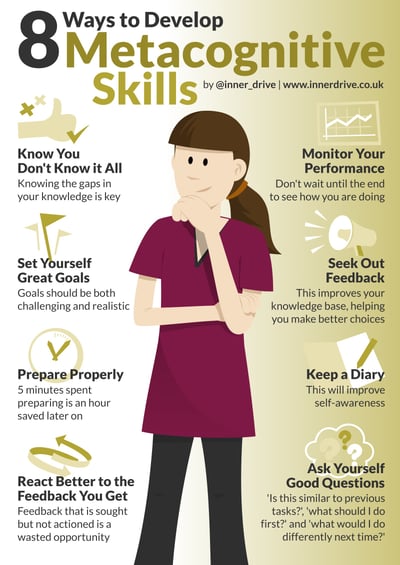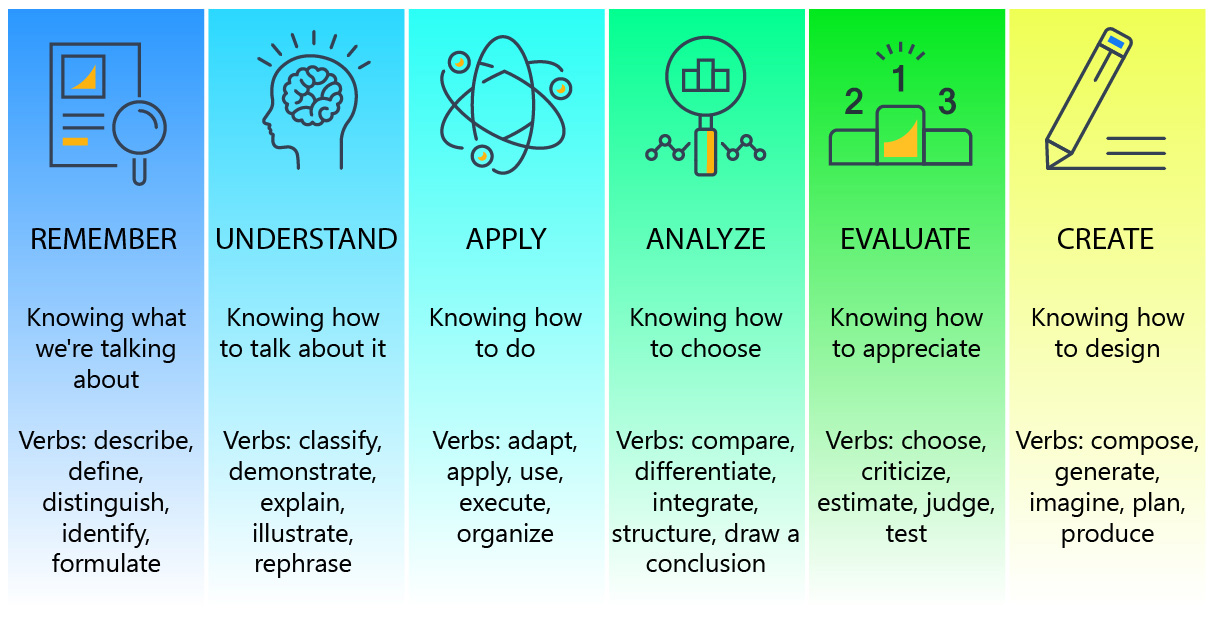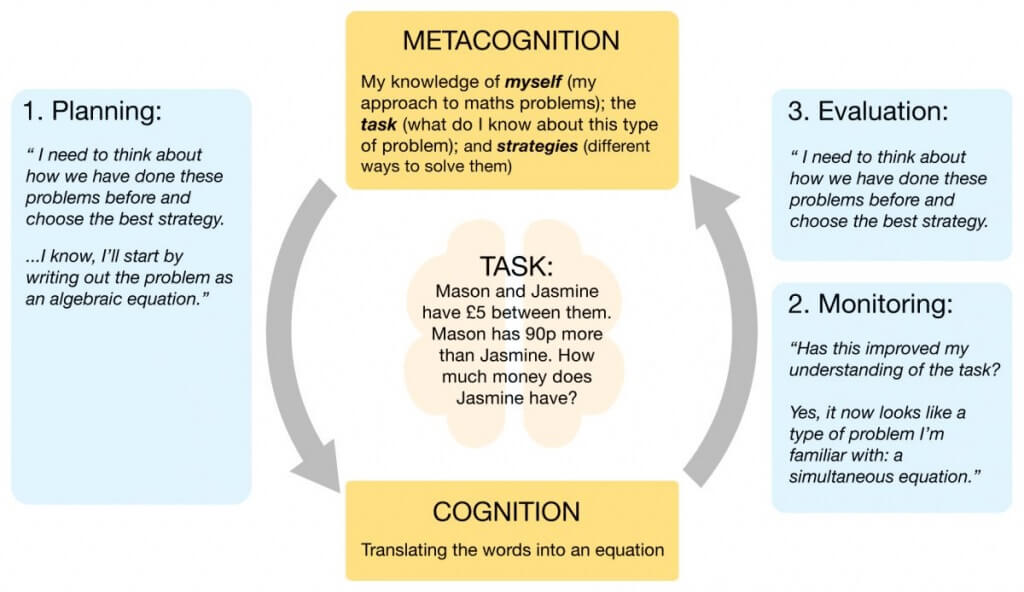Favorite Tips About How To Develop Metacognition

Fogarty (1994) suggests that metacognition is a process that spans three distinct phases, and that, to be successful thinkers, students must do the following:
How to develop metacognition. Use a gradual release approach. Metacognition is an awareness of one's thought processes and an understanding of the patterns behind them. Developing metacognitive skills starts with using effective questioning in the classroom.
One of ten metacognitive strategies outlined in the book is called “inking your thinking.” it is a simple writing log that requires students to reflect on a lesson they are about. Five ways to boost metacognition #1: Ask students to monitor their learning throughout the lesson.
Here are three questions that will. The term comes from the root word meta, meaning beyond, or on top of. Engage secondary students in critical thinking and the metacognitive process.
It is highly correlated with. These questions develop learners’ reasoning and thinking skills, and indicate that. To determine how to improve your metacognitive skills, you first need to understand how you learn most effectively.
Open lessons with activities that get students thinking and talking about what they. Demonstrate the way to use metacognitive. Some metacognitive strategies are easy to implement:
Weaving metacognition into our days can be done in many different ways. How can we use metacognitive strategies in secondary schools? Ask students to submit a reflection on a topic before reading a text and then revisit that reflection after the reading.






.png)









